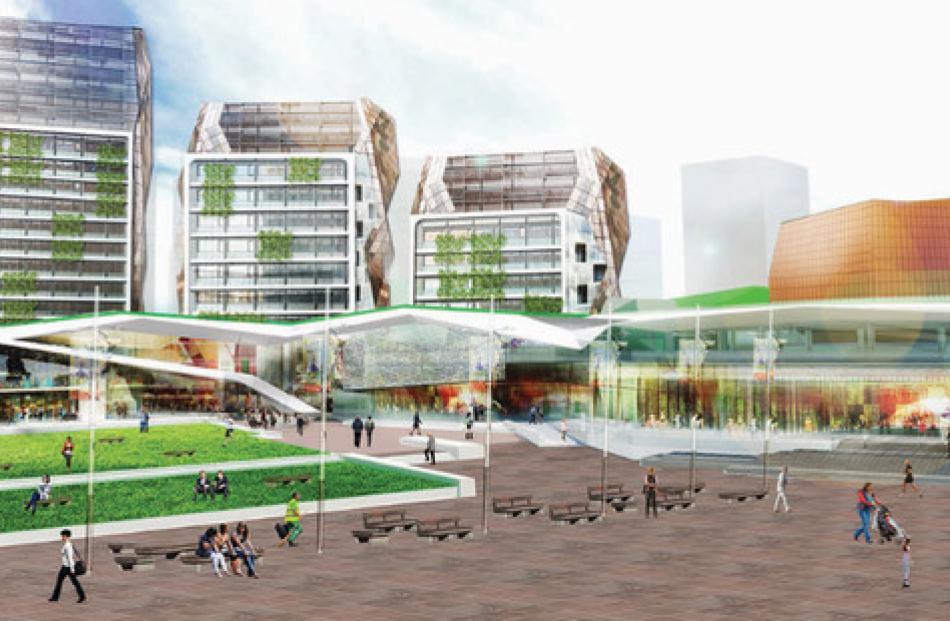Plans to save New Zealand's first skyscraper, the Civic Building on Aotea Square, or demolish it have been outlined to councillors and the media today.
Council officers have been investigating options and market interest to refurbish the building, which will be empty by the New Year after serving as the city's main civic administration building since 1966.
The wrecking ball has been hanging over the building since the Auckland Council paid $104 million for the 31-storey ASB Bank Centre in Albert St for its new headquarters.
The 100m tower was designed in the 1950s and completed in 1966. It has been criticised as an ugly box, but many architects marvel at its features.
Architect Julia Gatley, an authority on modern architecture in New Zealand, has praised it as a beautifully proportioned, slender building that encapsulates modernism.
It has no heritage status, but two reports have suggested it warrants a category A listing, and the council's heritage division says it merits category B status.
Heritage New Zealand also wants to see it gain heritage status and saved.
The council's property arm said without major refurbishment and the removal asbestos it would be unsuitable for council or other uses, such as commercial, residential and hotel.
Auckland Council Property said it would cost about $78 million for full refurbishment to modern office and code requirements, or $60 million for a residential conversion.
Demolition and site reinstatement is estimated at between $11.5 million to $12.5 million.
Auckland Council Property chief executive David Rankin said the building may need a council subsidy to make it economically viable for refurbishment.
The Auckland development committee will consider the future of the building in February.
JLL (Jones Lang LaSalle) research director Justin Keane has previously told the Herald the building could become a B grade office building, but it also "screams apartment conversion".
He said it would cost between $5 million to $10 million to remove the remaining asbestos in the building. In 1989, 350 tonnes of asbestos were removed.
Mr Keane put asbestos removal and refurbishment costs for the 14,300sq m building at $34 million to $53 million.
Regional Facilities Auckland, which manages the Aotea Centre and other arts facilities, outlined three long-term concepts today for the Aotea arts precinct.
The first concept retains the Civic Building for a mix of arts and commercial purposes.
The administration building could be used to house 200 to 300 Regional Facilities staff, who are now located in the Aotea Centre.
That would create administration and rehearsal space for performing arts groups, such as the Auckland Philharmonic Orchestra and the Royal NZ Ballet.
The second concept would see the demolition of the Civic Building and redeveloping the site for mixed arts and commercial/residential use.
The third concept demolishes the Civic Building and redevelops the site primarily for arts use.
Photographer Patrick Reynolds, who teaches at Auckland University's School of Architecture and Planning, said the Civic was an important building by an important architect - chief city architect Tibor Donner(1946-1967).
It would need to be stripped down to its structure and that raised questions about how much of the heritage was left, he said.
Mr Reynolds said it appealed enormously as "Hotel Moderne" with its modernist credentials, saying the council should be exploring creative ways of preserving the building.
By Bernard Orsman of the New Zealand Herald













